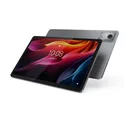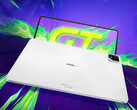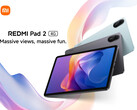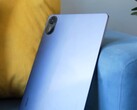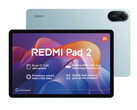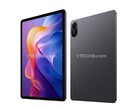Verdict: Affordable tablet for your home
The Xiaomi Redmi Pad 2 4G is a solid tablet with good multimedia features. The four speakers provide an appealing sound experience. There is also an audio jack, FM radio, LTE support and microSD support on board. The 11-inch display is well tuned and offers crisp contrasts.
On the other hand, the display is not particularly bright and is only suitable for outdoor use to a limited extent, and HDR is also not available. The virtual ambient light sensor is sluggish. System speed is decent, but the SoC does not offer many reserves.
A big plus is that the Redmi tablet has already dropped significantly in price and it will be difficult to find a cheaper tablet with comparable features.
Pros
Cons
Price and availability
Table of Contents
- Verdict: Affordable tablet for your home
- Specifications Xiaomi Redmi Pad 2 4G
- Case and features - Redmi Pad 2 relies on aluminum
- Software and sustainability - Redmi tablet gets updates until 2032
- Cameras - Light fare in the Redmi Pad 2
- Display - Dark LCD without HDR support
- Further measurements and benchmarks for the Redmi Pad 2 4G
- Notebookcheck overall rating
- Possible alternatives comparison
The successor to the Redmi Pad presents itself with fewer innovations than would be expected after such a long period of time.
However, with an audio jack and optional microSD expansion, the Xiaomi tablet remains true to its core values and now has the option to connect to the mobile network.
Specifications Xiaomi Redmi Pad 2 4G
Case and features - Redmi Pad 2 relies on aluminum
The Xiaomi Redmi Pad 2 is a whopping 74 grams heavier than its predecessor, but is still within a typical weight range for its device class. The workmanship is good and leaves a robust impression. However, the tablet no longer has a unibody design, as there is now a prominent plastic strip on the top edge of the back. The card slot is also not flush with the frame, but is slightly recessed into it.
This is a hybrid slot. It can therefore accommodate either two nano-SIMs or, instead of the second SIM, a microSD card. The transfer rates of the latter are good with our reference card. With Wi-Fi 5, the Wi-Fi standard is a little outdated, but the speed on offer is perfectly adequate.
The optional Redmi pen works well, but it doesn't feel very natural on the tablet's smooth surface. For biometric security, only insecure facial recognition via the front camera is available. There is no vibration motor.
| SD Card Reader - average JPG Copy Test (av. of 3 runs) | |
| Samsung Galaxy Tab A9+ (Angelbird AV Pro V60) | |
| Average of class Tablet (10.2 - 57.4, n=51, last 2 years) | |
| Xiaomi Redmi Pad 2 4G (Angelbird AV Pro V60) | |
| Lenovo Tab K11 Plus (Angelbird V60) | |
Software and sustainability - Redmi tablet gets updates until 2032
The Xiaomi Redmi Pad 2 4G comes with Android 15 and HyperOS 2.0. It is to be supplied with updates for seven years (until June 15, 2032). The manufacturer has not yet communicated how many version upgrades this includes, nor the interval of the security patches, which were updated to May 1, 2025 at the time of testing. The Play system updates (as of April 1, 2025) are also not up to date.
In terms of sustainability, there is no specific information on the product, only the information from the EU energy label. The outer packaging is not plastic-free.
Cameras - Light fare in the Redmi Pad 2
The front camera of the Redmi Pad 2 4G only offers a few details and mixed sharpness, but a good color balance. This is sufficient for video calls.
The main camera on the back delivers decent results in daylight and even the 2x zoom is still useful for documentation purposes. A maximum of five times magnification is possible, but this only produces muddy images.
Videos can be recorded in Full HD (30 FPS) with all of the tablet's cameras. Optical image stabilization is not available.

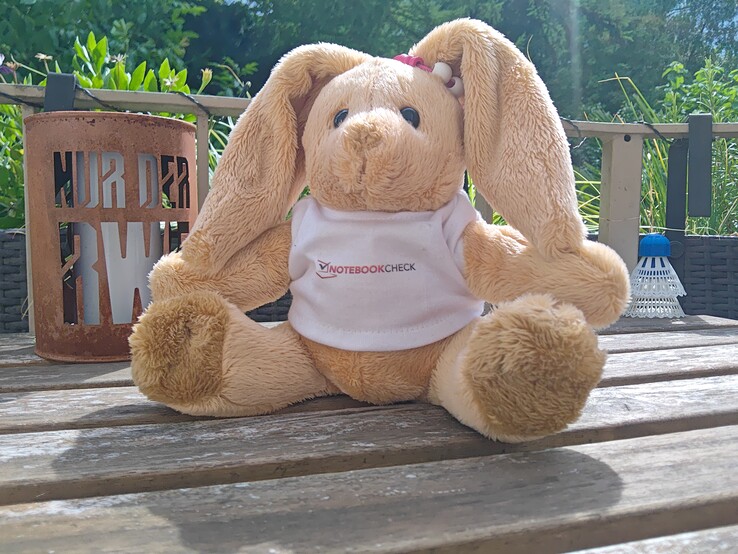

Display - Dark LCD without HDR support
The LC display of the Redmi Pad 2 4G measures 11 inches and offers a high pixel density. Thanks to the low black levels, it displays rich contrasts. We noticed a high-frequency flickering at minimum brightness, but this is not PWM and should not cause any problems in everyday use.
According to Xiaomi, the Pad 2 should reach up to 500 cd/m² and even have a boost up to 600 cd/m² (in outdoor mode) up its sleeve. However, we were unable to tease this out in our measurements, as the tablet only has a virtual ambient light sensor, which is not very reliable when it comes to regulating the brightness.
We therefore only measured the brightness in manual mode and only scratched the 400 cd/m² limit at best; we did not find any higher values in outdoor mode either. Although this is easily sufficient for indoor use, the Redmi Pad 2 4G quickly reaches its limits outdoors.
| |||||||||||||||||||||||||
Brightness Distribution: 84 %
Center on Battery: 398 cd/m²
Contrast: 1421:1 (Black: 0.28 cd/m²)
ΔE ColorChecker Calman: 1.6 | ∀{0.5-29.43 Ø4.78}
ΔE Greyscale Calman: 3.2 | ∀{0.09-98 Ø5}
92.5% sRGB (Calman 2D)
Gamma: 2.67
CCT: 6542 K
| Xiaomi Redmi Pad 2 4G TFT-LCD, 2560x1600, 11" | Huawei MatePad 11.5 IPS, 2200x1440, 11.5" | Lenovo Tab K11 Plus IPS, 2000x1200, 11.5" | Samsung Galaxy Tab A9+ TFT-LCD, 1920x1200, 11" | |
|---|---|---|---|---|
| Screen | -38% | 17% | -83% | |
| Brightness middle (cd/m²) | 398 | 472 19% | 473 19% | 493 24% |
| Brightness (cd/m²) | 354 | 432 22% | 449 27% | 460 30% |
| Brightness Distribution (%) | 84 | 86 2% | 87 4% | 90 7% |
| Black Level * (cd/m²) | 0.28 | 0.44 -57% | 0.25 11% | 0.35 -25% |
| Contrast (:1) | 1421 | 1073 -24% | 1892 33% | 1409 -1% |
| Colorchecker dE 2000 * | 1.6 | 3.4 -113% | 1.56 2% | 6 -275% |
| Colorchecker dE 2000 max. * | 3.2 | 6.6 -106% | 3.8 -19% | 11.7 -266% |
| Greyscale dE 2000 * | 3.2 | 4.8 -50% | 1.3 59% | 8.2 -156% |
| Gamma | 2.67 82% | 2.41 91% | 2.178 101% | 2.21 100% |
| CCT | 6542 99% | 7035 92% | 6726 97% | 9131 71% |
* ... smaller is better
Screen Flickering / PWM (Pulse-Width Modulation)
| Screen flickering / PWM detected | 14990 Hz | ||
The display backlight flickers at 14990 Hz (worst case, e.g., utilizing PWM) . The frequency of 14990 Hz is quite high, so most users sensitive to PWM should not notice any flickering. In comparison: 53 % of all tested devices do not use PWM to dim the display. If PWM was detected, an average of 8142 (minimum: 5 - maximum: 343500) Hz was measured. | |||
Display Response Times
| ↔ Response Time Black to White | ||
|---|---|---|
| 24.2 ms ... rise ↗ and fall ↘ combined | ↗ 11.68 ms rise | |
| ↘ 12.52 ms fall | ||
| The screen shows good response rates in our tests, but may be too slow for competitive gamers. In comparison, all tested devices range from 0.1 (minimum) to 240 (maximum) ms. » 56 % of all devices are better. This means that the measured response time is worse than the average of all tested devices (20.2 ms). | ||
| ↔ Response Time 50% Grey to 80% Grey | ||
| 33.04 ms ... rise ↗ and fall ↘ combined | ↗ 14.46 ms rise | |
| ↘ 18.58 ms fall | ||
| The screen shows slow response rates in our tests and will be unsatisfactory for gamers. In comparison, all tested devices range from 0.165 (minimum) to 636 (maximum) ms. » 44 % of all devices are better. This means that the measured response time is similar to the average of all tested devices (31.7 ms). | ||
Further measurements and benchmarks for the Redmi Pad 2 4G
| Networking | |
| Xiaomi Redmi Pad 2 4G | |
| iperf3 transmit AXE11000 | |
| iperf3 receive AXE11000 | |
| Huawei MatePad 11.5 | |
| iperf3 transmit AXE11000 | |
| iperf3 receive AXE11000 | |
| Lenovo Tab K11 Plus | |
| iperf3 transmit AXE11000 | |
| iperf3 receive AXE11000 | |
| Samsung Galaxy Tab A9+ | |
| iperf3 transmit AXE11000 | |
| iperf3 receive AXE11000 | |
| Average 802.11 a/b/g/n/ac | |
| iperf3 transmit AXE11000 | |
| iperf3 receive AXE11000 | |
| Average of class Tablet | |
| iperf3 transmit AXE11000 | |
| iperf3 receive AXE11000 | |
| PCMark for Android - Work 3.0 | |
| Average of class Tablet (4622 - 27428, n=77, last 2 years) | |
| Average Mediatek Helio G100 (10703 - 10723, n=2) | |
| Samsung Galaxy Tab A9+ | |
| Huawei MatePad 11.5 | |
| Lenovo Tab K11 Plus | |
| Geekbench AI | |
| Single Precision NPU 1.5 | |
| Average of class Tablet (166 - 5295, n=27, last 2 years) | |
| Xiaomi Redmi Pad 2 4G | |
| Half Precision NPU 1.5 | |
| Average of class Tablet (154 - 41155, n=27, last 2 years) | |
| Xiaomi Redmi Pad 2 4G | |
| Quantized NPU 1.5 | |
| Average of class Tablet (88 - 57388, n=27, last 2 years) | |
| Xiaomi Redmi Pad 2 4G | |
| Xiaomi Redmi Pad 2 4G | Huawei MatePad 11.5 | Lenovo Tab K11 Plus | Samsung Galaxy Tab A9+ | Average 256 GB UFS 2.2 Flash | Average of class Tablet | |
|---|---|---|---|---|---|---|
| AndroBench 3-5 | 32% | 4% | -42% | -4% | 40% | |
| Sequential Read 256KB (MB/s) | 975.3 | 1037.71 6% | 1003.25 3% | 485.96 -50% | 903 ? -7% | 1761 ? 81% |
| Sequential Write 256KB (MB/s) | 913.33 | 903.32 -1% | 876.29 -4% | 476.37 -48% | 727 ? -20% | 1309 ? 43% |
| Random Read 4KB (MB/s) | 214.81 | 297.25 38% | 244.03 14% | 130.67 -39% | 226 ? 5% | 243 ? 13% |
| Random Write 4KB (MB/s) | 228.14 | 418.84 84% | 232.16 2% | 162.9 -29% | 247 ? 8% | 277 ? 21% |
(+) The maximum temperature on the upper side is 36.1 °C / 97 F, compared to the average of 33.7 °C / 93 F, ranging from 20.7 to 53.2 °C for the class Tablet.
(+) The bottom heats up to a maximum of 35.3 °C / 96 F, compared to the average of 33.2 °C / 92 F
(+) In idle usage, the average temperature for the upper side is 26.7 °C / 80 F, compared to the device average of 30 °C / 86 F.
3DMark Steel Nomad Stress Test
| 3DMark | |
| Wild Life Stress Test Stability | |
| Huawei MatePad 11.5 | |
| Lenovo Tab K11 Plus | |
| Samsung Galaxy Tab A9+ | |
| Xiaomi Redmi Pad 2 4G | |
| Steel Nomad Light Stress Test Stability | |
| Xiaomi Redmi Pad 2 4G | |
| Lenovo Tab K11 Plus | |
Xiaomi Redmi Pad 2 4G audio analysis
(+) | speakers can play relatively loud (86.3 dB)
Bass 100 - 315 Hz
(-) | nearly no bass - on average 19.8% lower than median
(±) | linearity of bass is average (10.9% delta to prev. frequency)
Mids 400 - 2000 Hz
(±) | higher mids - on average 6.7% higher than median
(+) | mids are linear (5.3% delta to prev. frequency)
Highs 2 - 16 kHz
(+) | balanced highs - only 3.3% away from median
(+) | highs are linear (6.3% delta to prev. frequency)
Overall 100 - 16.000 Hz
(±) | linearity of overall sound is average (16.4% difference to median)
Compared to same class
» 39% of all tested devices in this class were better, 5% similar, 56% worse
» The best had a delta of 7%, average was 20%, worst was 129%
Compared to all devices tested
» 26% of all tested devices were better, 6% similar, 68% worse
» The best had a delta of 4%, average was 24%, worst was 134%
Samsung Galaxy Tab A9+ audio analysis
(+) | speakers can play relatively loud (89.3 dB)
Bass 100 - 315 Hz
(-) | nearly no bass - on average 22.4% lower than median
(±) | linearity of bass is average (10% delta to prev. frequency)
Mids 400 - 2000 Hz
(±) | higher mids - on average 5.7% higher than median
(+) | mids are linear (5.8% delta to prev. frequency)
Highs 2 - 16 kHz
(+) | balanced highs - only 2.4% away from median
(+) | highs are linear (3.7% delta to prev. frequency)
Overall 100 - 16.000 Hz
(±) | linearity of overall sound is average (15.5% difference to median)
Compared to same class
» 36% of all tested devices in this class were better, 3% similar, 61% worse
» The best had a delta of 7%, average was 20%, worst was 129%
Compared to all devices tested
» 22% of all tested devices were better, 4% similar, 74% worse
» The best had a delta of 4%, average was 24%, worst was 134%
| Battery runtime - WiFi v1.3 | |
| Xiaomi Redmi Pad 2 4G | |
| Huawei MatePad 11.5 | |
| Lenovo Tab K11 Plus | |
| Samsung Galaxy Tab A9+ | |
Notebookcheck overall rating
The Xiaomi Redmi Pad 2 4G is an inexpensive tablet with good sound, a decent 11-inch display and solid performance for everyday use. The cameras and display are sufficient for simple applications, but quickly reach their limits. LTE, jack connection, FM radio, microSD and the reduced price are practical features.
Xiaomi Redmi Pad 2 4G
- 07/24/2025 v8
Daniel Schmidt
Possible alternatives comparison
Image | Model / Review | Price | Weight | Drive | Display |
|---|---|---|---|---|---|
| Xiaomi Redmi Pad 2 4G Mediatek Helio G100 ⎘ ARM Mali-G57 MP2 ⎘ 8 GB Memory, 256 GB UFS 2.1 | Amazon: 1. $199.99 Xiaomi Redmi Pad 2 4G LTE (C... 2. $272.99 Xiaomi Redmi Pad 2 4G LTE (C... 3. $175.00 Xiaomi Redmi Pad 2 Only WiFi... | 519 g | 256 GB UFS 2.2 Flash | 11.00" 2560x1600 274 PPI TFT-LCD | |
| Huawei MatePad 11.5 Qualcomm Snapdragon 7 Gen 1 ⎘ Qualcomm Adreno 644 ⎘ 6 GB Memory, 128 GB UFS 2.1 | Amazon: 1. $95.81 Lkfyyds for Huawei MatePad 1... 2. $37.59 arVin Gaming Controller for ... 3. $105.11 For Huawei M-Pencil (3rd Gen... List Price: 299€ | 499 g | 128 GB UFS 2.2 Flash | 11.50" 2200x1440 229 PPI IPS | |
| Lenovo Tab K11 Plus Qualcomm Snapdragon 680 4G ⎘ Qualcomm Adreno 610 ⎘ 8 GB Memory, 256 GB UFS 2.1 | Amazon: 1. $179.99 Lenovo Tab K11 TB330XU Table... 2. $270.82 Lenovo Tab K11 Plus TB352FU ... 3. $235.00 Lenovo Tab Plus - 2024 - Pre... | 520 g | 256 GB UFS 2.2 Flash | 11.45" 2000x1200 204 PPI IPS | |
| Samsung Galaxy Tab A9+ Qualcomm Snapdragon 695 5G ⎘ Qualcomm Adreno 619 ⎘ 4 GB Memory, 64 GB UFS 2.1 | List Price: 249€ | 480 g | 64 GB UFS 2.2 Flash | 11.00" 1920x1200 206 PPI TFT-LCD |
Transparency
The selection of devices to be reviewed is made by our editorial team. The test sample was given to the author by the manufacturer free of charge for the purposes of review. There was no third-party influence on this review, nor did the manufacturer receive a copy of this review before publication. There was no obligation to publish this review. As an independent media company, Notebookcheck is not subjected to the authority of manufacturers, retailers or publishers.
This is how Notebookcheck is testing
Every year, Notebookcheck independently reviews hundreds of laptops and smartphones using standardized procedures to ensure that all results are comparable. We have continuously developed our test methods for around 20 years and set industry standards in the process. In our test labs, high-quality measuring equipment is utilized by experienced technicians and editors. These tests involve a multi-stage validation process. Our complex rating system is based on hundreds of well-founded measurements and benchmarks, which maintains objectivity. Further information on our test methods can be found here.






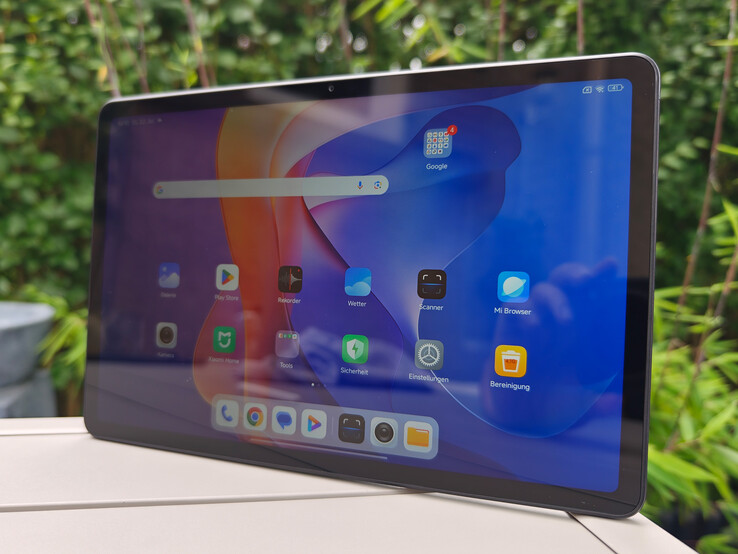








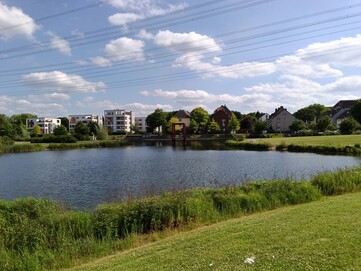








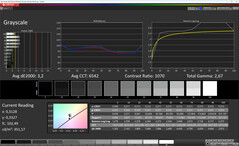



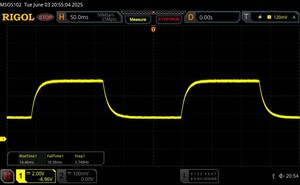
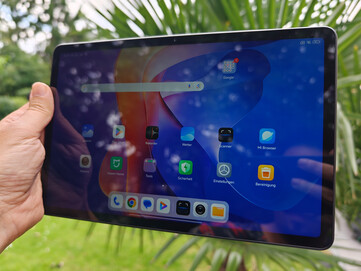


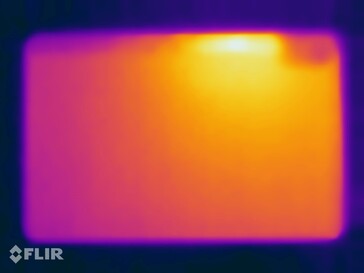
 Total Sustainability Score:
Total Sustainability Score: 

